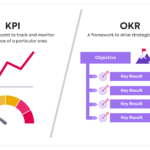In an era defined by rapid technological advancements, digital transformation is not merely a trend; it’s a critical component for business success. Organizations must embrace digital transformation to enhance efficiency, improve customer experiences, and remain competitive. This blog explores the significance of digital transformation, the common challenges businesses face, and practical steps to navigate the digital landscape effectively.

Understanding Digital Transformation
Digital transformation involves integrating digital technology into all areas of a business, fundamentally changing how it operates and delivers value to customers. It encompasses various strategies, tools, and processes designed to improve efficiency, enhance customer engagement, and drive innovation.
The Growing Need for Digital Transformation
As consumer expectations evolve and technological advancements continue to accelerate, businesses must adapt or risk obsolescence. Companies that fail to embrace digital transformation may struggle to compete in an increasingly digital marketplace. According to a recent report, 70% of organizations either have a digital transformation strategy in place or are actively working on one, underscoring the urgency for businesses to evolve.
Common Challenges in Digital Transformation
- Resistance to Change: Many employees may resist adopting new technologies or processes, fearing disruption to their roles or workflows.
- Legacy Systems: Outdated technologies can hinder progress, making it difficult to integrate new digital solutions.
- Data Management: Collecting, managing, and analyzing data effectively is crucial for informed decision-making, but many organizations struggle with data silos and poor data quality.
- Skill Gaps: The rapid pace of technological change often outpaces the skillsets of employees, necessitating ongoing training and development.
Why Digital Transformation Is Essential
- Enhanced Customer Experiences: Today’s consumers expect seamless, personalized interactions with brands. Digital transformation enables businesses to leverage data and technology to deliver tailored experiences that meet customer needs.
- Increased Operational Efficiency: Automating processes and integrating digital tools can significantly streamline operations, reducing costs and improving productivity.
- Data-Driven Decision Making: By harnessing data analytics, organizations can gain valuable insights into customer behavior, market trends, and operational performance, leading to more informed business decisions.
- Fostering Innovation: Embracing digital technologies encourages a culture of innovation, allowing businesses to develop new products, services, and business models that can drive growth.
Practical Steps for Successful Digital Transformation
- Define Your Vision and Strategy: Establish a clear vision for digital transformation that aligns with your business goals. Develop a comprehensive strategy that outlines specific initiatives, timelines, and desired outcomes.
- Engage Stakeholders: Involve key stakeholders from across the organization in the transformation process. Engaging employees, leadership, and customers ensures that the strategy addresses their needs and concerns.
- Invest in Technology: Identify and implement the right digital tools and technologies that will support your transformation efforts. This may include cloud computing, data analytics, and customer relationship management (CRM) systems.
- Prioritize Data Management: Develop a robust data management strategy to ensure data quality, accessibility, and security. This will enable you to leverage data effectively for decision-making and customer insights.
- Foster a Culture of Change: Encourage a culture that embraces change and innovation. Provide training and resources to help employees adapt to new technologies and processes.
- Monitor Progress and Adapt: Continuously evaluate the effectiveness of your digital transformation initiatives. Gather feedback, track key performance indicators (KPIs), and be prepared to adjust your strategy as needed.
The Role of Digital Transformation Tools
Leveraging digital transformation tools can enhance your organization’s ability to adapt and thrive in a digital-first environment. Here are some essential tools to consider:
- Cloud Solutions: Facilitate remote collaboration, data storage, and application deployment.
- Data Analytics Platforms: Provide insights into customer behavior and business performance, enabling data-driven decision-making.
- Customer Relationship Management (CRM) Systems: Enhance customer interactions and streamline sales processes.
- Collaboration Tools: Support communication and teamwork among employees, regardless of location.
Conclusion
Digital transformation is no longer optional; it’s a necessity for businesses aiming to succeed in the digital age. By embracing change, investing in the right technologies, and fostering a culture of innovation, organizations can navigate the complexities of digital transformation and unlock new opportunities for growth. Remember, the journey of transformation begins with a single step—start today to secure your organization’s future in a rapidly evolving digital landscape.




